New Zealand’s Productivity Commission (PC) has released a ginormous (387-page) draft report entitled Using Land for Housing, which examines New Zealand’s land-use and planning systems, and offers 70 wide-ranging recommendations for reform that aim to free-up the supply process (both in-fill and greenfield) and make housing more readily available and affordable.
The PC notes that “high land prices, regulatory barriers that restrict the supply of land (or prevent more efficient use of land) and skewed housing production have a number of negative impacts on individuals and on the New Zealand economy”.
In particular, New Zealanders “pay a comparatively high share of their incomes on housing and face a housing supply that is increasingly ill-suited to their needs” with overcrowding common:
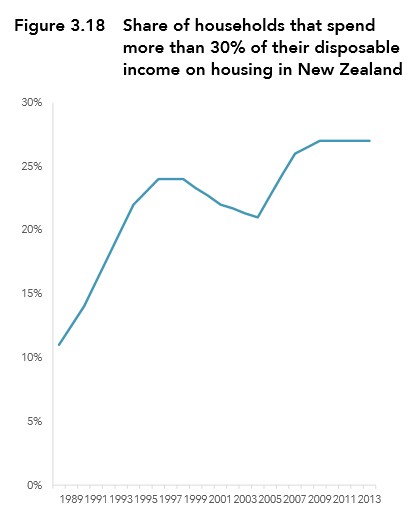
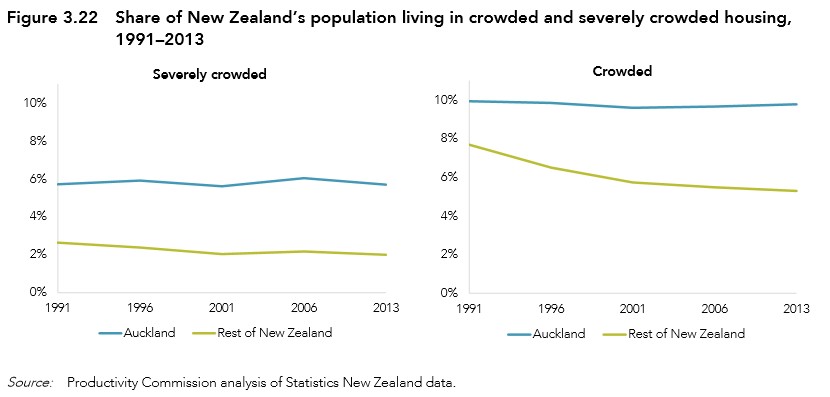
People on lower incomes also have fewer opportunities to enter the property market and accumulate wealth, thus worsening wealth equality:
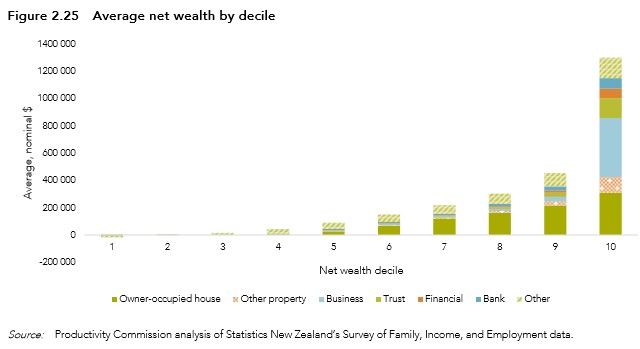
New Zealand’s high housing costs are also having an adverse impact on the economy, and are a clear and present risk to financial stability:
The stock of residential housing, valued at about $768 billion, is the largest component of wealth of New Zealanders. Households also spend a significant share of their income on housing. Instability and poor performance in the land supply and development market can be transmitted to wider economic volatility and performance due to the links between house prices, credit availability, and household consumption and indebtedness…
Volatile house prices created by restrictive regulation can affect macroeconomic stability through wealth effects. The owners of rapidly appreciating assets feel wealthier and may decide to spend some of these capital gains in advance. This was seen in New Zealand during the house price boom of the past decade, and remains a concern for the Reserve Bank as Auckland prices have risen rapidly again over the past few years…
Interest rate rises to offset increased domestic demand increases the cost of borrowing to businesses and may discourage investment. Higher interest rates also put pressure on homeowners with high debt levels relative to their incomes (eg, new owners) and it becomes harder for people to enter the property market. As a result, the wider community can end up bearing the costs of gains created by an unduly restrictive planning system.
The report also argues that high housing costs limit the ability of people to seek better employment opportunities in cities, and are a barrier to potential productivity gains.
In observing the escalation of New Zealand’s housing values, the PC notes that the problem is reflected primarily in rising land costs, particularly in the bigger cities, where population growth has been strongest (especially Auckland):
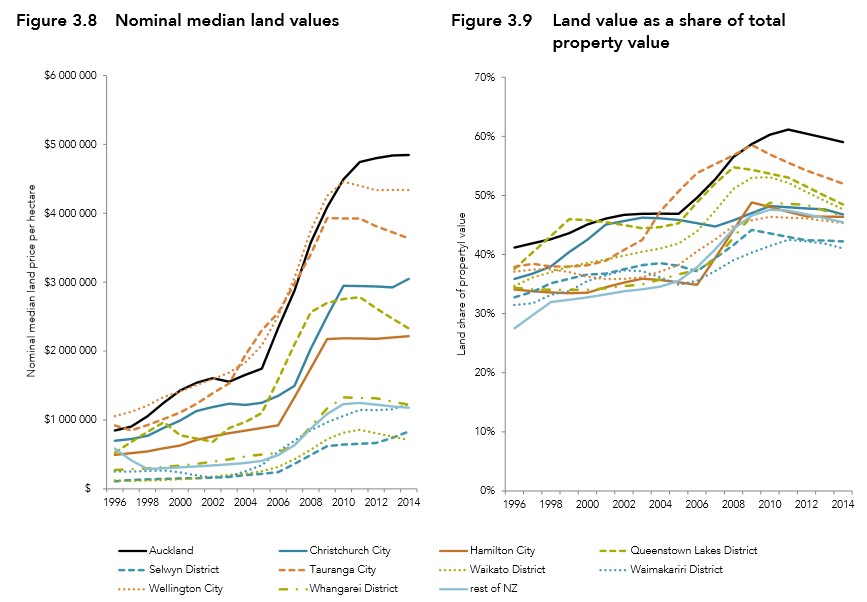
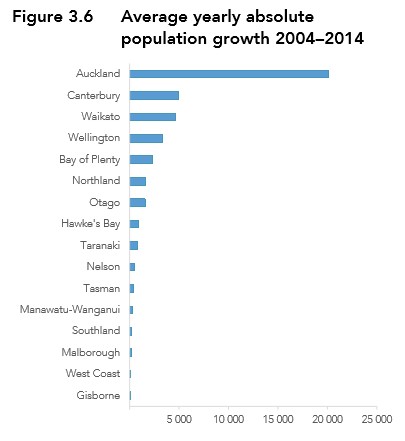
And housing supply in many cities – but particularly Auckland – has been sluggish in response to population growth and has struggled to keep pace with increasing demand:
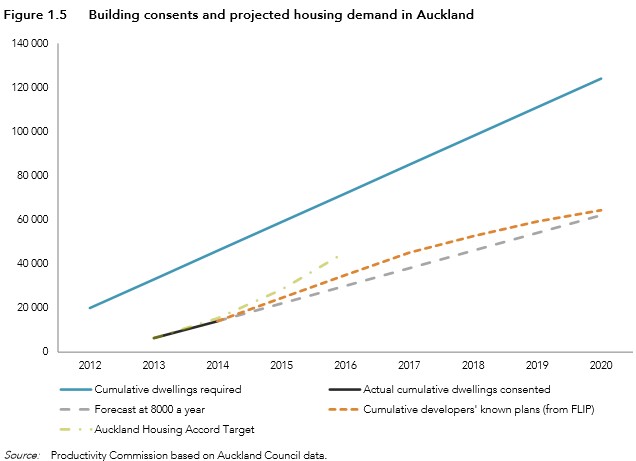
The causes of this land price escalation relate mostly to restrictive planning.
The planning system has constrained the supply of both greenfield and in-fill land – hence the price escalation. The problem is most acute in Auckland, where land value accounts for as much as 60% of total property value, compared with about 40% in the rest of New Zealand.
The PC argues that:
Unlocking land for housing is a necessary first step and catalyst for productivity improvements in other parts of the housing supply pipeline. Unlocking land allows economies of scale in land assembly, land development and housing construction. Larger building firms are able to generate scale efficiency from building large numbers of houses on contiguous sites and by purchasing at a greater scale, particularly building materials. Yet the building industry in New Zealand is characterised by small firms that build just one or two houses a year. The current industry structure is a product of the environment in which it operates, which is characterised by fragmented and expensive land supply.
The PC also shows that the price of land in Auckland just inside its urban growth boundary (called the MUL) has risen against the price of land just outside of it, suggesting that land supply has been increasingly choked:
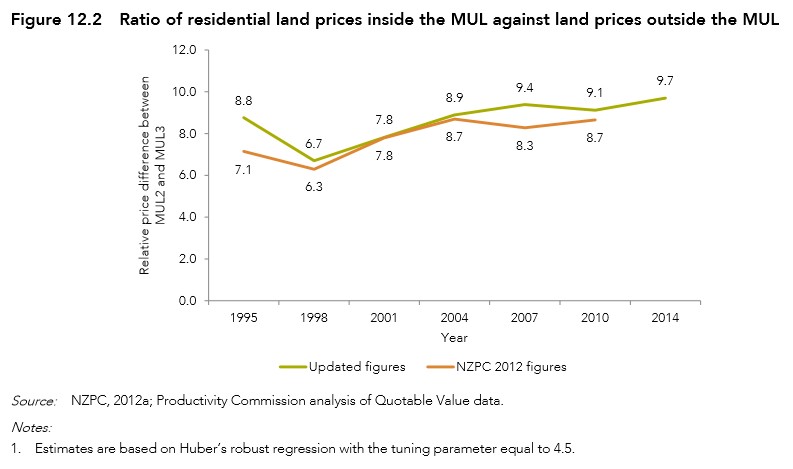
It, therefore, recommends that council adopt price signals to determine whether they are successfully creating enough development-ready land, and recommends developing a specific threshold (trigger) for the price difference between developable and non-developable land, beyond which it will ensure additional developable land is made available.
Importantly, the PC also recommends making it easier to develop more high density housing such as apartments, including by:
- Requiring councils to undertake a cost-benefit analysis before introducing height restrictions on buildings and increasing current height limits where it cannot be shown that the benefits they create outweigh the costs.
- Avoiding wide-ranging heritage or special character policies that restrict redevelopment of housing stock. The report recommends that councils should instead concentrate heritage and special character policies on individual structures rather than whole suburbs.
- Councils in high growth areas should avoid explicit limits on housing density and review existing limits with a view to removing them.
- Remove requirements for apartments to have balconies and restrictions requiring apartments to be a minimum size.
- Remove minimum parking requirements.
Further, it recommends changing the way councils calculate their rates, from capital value (which includes the value of any buildings on it) to basing rates on the unimproved land value of a property. This, it argues, would penalise land banking and vagrancy and encourage densification, such as the building of multi-unit developments (in turn, boosting effective housing supply). It would also benefit lower income earners, who are penalised under the current rating system (see next chart).
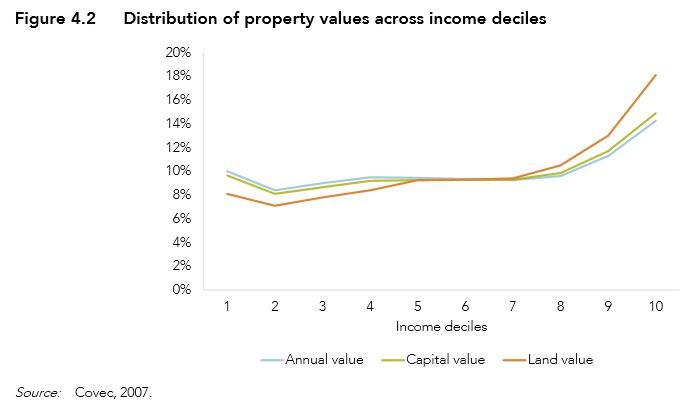
Overall, a very well-written report by the PC, which makes a lot of sense.

